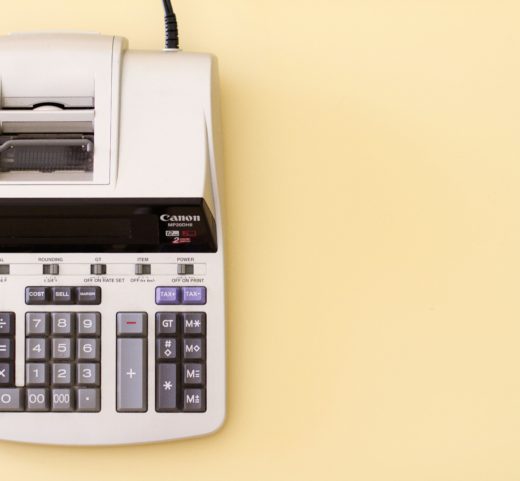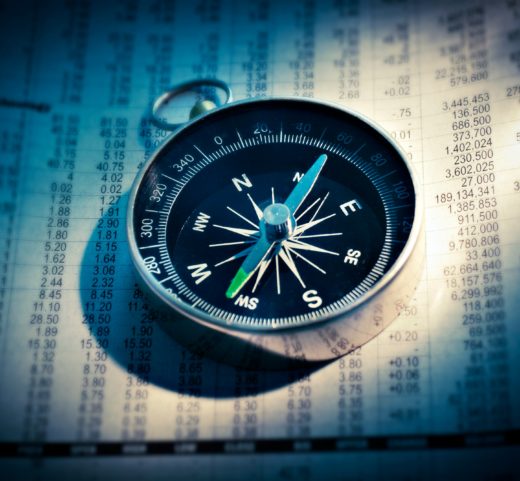
What’s really going on with inflation?
News today – UK Inflation Jumps to higher level in 30 years.
In November 2020, Head of Investment at Cavendish Ware, Lance Peltz concluded that after two decades of structural disinflation, we are entering a new phase. Higher – but not hyper – inflation was to be expected. Fourteen months on and the headlines are unavoidable. “Families feel the squeeze on budgets as inflation hits 30-year high”, screams the Daily Mail. “All eyes on inflation figures as the cost of living keeps rising”, bellows The Times. “Inflation in many countries hits its highest level for many years, increasing households’ cost of living”, reports the Financial Times, soberly.
To navigate through all the market noise, we spoke to Lance to ask more about what’s really going on. To get a truly expert view on the situation, Lance reveals, we must first break down some commonly-held misconceptions. Here are five essential truths investors need to know about inflation today.
Q: Are the official inflation figures accurate?
Lance: Inflation is not necessarily what it is reported to be. There are many reasons for this. One being that the basket of goods and services that make up the Consumer Price Index (or CPI) rarely reflects an individual’s personal consumption pattern.
Sometimes the CPI items are very outdated. For example, it was only in early 2020 that the UK Office for National Statistics dropped the MP4 (DVD) player from the basket. But nobody’s bought a DVD player for years. They’ve been out of the mainstream for around a decade. The price of an MP4 device today is not reflective of what people are really putting in their shopping trolleys.
Measuring inflation is not straightforward either. For an accurate reading, the items must be the same quantity and quality over time, with only the price changing. This is easy enough for items like apples, petrol, or a McDonald’s Big Mac. But for goods like mobile phones, the calculation is more difficult. After all, today’s latest iPhone is a completely different animal to the 1990s Nokia brick.
Herein lies our next problem. For items that constantly evolve, such as cars or personal devices, inflation levels are measured in ways the public might not expect. Often, the ONS factor in the relative “value for money” of an item over time. So, a Ford Focus is considered better value for money now than thirty years ago, because although the price is higher, buyers get proportionally more tech and features for their money. So, inflation is artificially suppressed. This technique is known as Hedonic Adjustment and interestingly, it only brings down the inflation levels, never increases it. As technology continues to advance and fill consumer baskets at break-neck speeds, we could see Hedonic Adjustments tamper even more with the official inflation number.
COVID has also widened the gap between real and reported inflation. Take restaurants for example. In the UK, the government was unable to collect data for restaurant prices during lockdown because they were shut. So, they estimated the number, which may have overstated inflation at the time. Now it’s harder to measure the true difference between current and past inflation levels, putting savers and lenders in unenviable positions.
Nobody has a full picture of how accurate – or inaccurate – the official inflation figures are. When surveyed, most people believe that the rate of inflation is significantly higher than the central banks report. For example, in the Eurozone between 2004 and 2018 – where the reported level of inflation was 1.5% – people anecdotally thought it was closer to 9%. Across the world, we see this pattern repeating. This may be why savers in some countries, such as India, prefer to save in inflation-proof assets like gold instead. This common mindset doesn’t necessarily mean that inflation is higher than reported. There are a range of human biases which come into play and prevent us from remembering events objectively. But it certainly doesn’t help with the central bank strategy of ensuring a confident and smooth 2% year-on-year increase. After all, inflation is really in the hands of the people.
Q: Is everyone experiencing inflation in the same way?
Lance: Inflation is increasing for everyone, but it’s hitting some people harder than others. As we’ve discussed, the inflation basket rarely reflects anybody’s expenditure basket. It doesn’t represent the shopping lists of higher earners, where more disposable income goes on services such as holidays and dining out. Nor does it reflect lower-wage households, who tend to spend a greater proportion of money on necessities like food. And of course, inflation doesn’t touch these different goods and services in the same ways. What’s more, depending on the index you use, the basket items could include mortgages and the cost of homeownership. Measuring inflation is a never-ending source of debate!
To try to get a more representative reading of inflation for lower-earners, one economist, Charles Gave, coined the “Walmart Index” – composed of the basics of shelter, food, and energy. Another economist, Alberto Cavallo has also tried to measure the disparity between real and official inflation in the USA, after the impact of COVID-19. He found that lower-income households in the USA experienced an inflation rate of 1.12% in March 2020, compared to 0.57% for their higher-income counterparts.
Higher-income households will of course be impacted by inflation, but they probably won’t feel it as strongly as the lower-earning demographics.
Q: What will the impact of COVID-19 be?
Lance: In the immediate aftermath COVID was deflationary influence, as we all stayed at home and spent less leading to a “demand shock”. Key prices such as crude oil collapsed.
To help combat financial Armageddon, central banks and governments embarked upon a massive stimulus to boost the money supply – a tactic known as Quantitative Easing – and cut interest rates. As well as this, the governments and central banks rallied together to deliver direct payments including furloughs, bounce back loans and more to jump-start the limp economic outlook.
This stimulus had and continues to have very real effects on the economy. For example, real interest rates – the bank or “base” rate minus the inflation level – in the UK are negative. Negative interest rates are effectively free money, meaning mortgages are being eroded, and that’s one of the reasons why house prices have gone up.
This stimulus along with the Zeitgeist of the YOLO (You Only Live Once) mindset triggered a very strong rebound in consumer demand, especially for goods. However, the demand was met with the roadblock of supply constraints, leading to an inflationary “supply shock” – suddenly demand exceeded supply.
As well as causing trillion-dollar slumps and turbo-charged stimuli, COVID-19 also accelerated two trends. The first is de-globalisation. Globalisation – where goods are manufactured internationally – reached its zenith just before the 2008 financial crisis. Buying an item of clothing that was designed in America, made in Asia, and sold in Europe was at its height. But in the years since, and especially after COVID-19, consumers have increasingly questioned the impact of such purchases. Low-quality goods which seem to exploit far-away workers and damage the environment are out of vogue. What’s more, protectionist policies from current and previous world leaders including Brexit and a trade war between the US and China, jeopardised the smooth-running of international supply chains even more. The final straw was the shock of COVID, which saw the cost of international shipping containers increase ten-fold. It opened business’ eyes to the problems of globalisation and accelerated a trend of onshoring or “near-shoring”. This will increase inflation over the coming years as the costs of goods and services inevitably rise.
The second trend is known as The Great Retirement. COVID-19 was like a shot of adrenaline to baby boomers on the edge of leaving the workforce. As people began to put quality of life and health at the forefront, many older employees left the job market. As the name suggests, baby boomers are such a large group that they’ve shaped the economy more than any other generation. As they entered the job market, their increased productivity saw inflation levels dip. While they worked, inflation was largely contained. Now, if droves retire in a short space of time, productivity goes down while spending doesn’t, leading to higher inflation. State spending will almost certainly increase too, squeezing younger workers to cover the pension costs of their parents and grandparents. What’s more, the low birth rates, declining numbers of young workers, and barriers for immigrants make higher inflation even more likely.
After the impact of COVID has passed, we expect the world will be much more pro-inflation. Not hyper-inflation, but pro-inflation.
Q: If inflation makes the cost of living more expensive, why have central banks tried to increase it?
Lance: In the same way that high inflation can influence human behaviour, so can deflation. Consumer confidence is very psychological.
When people start to feel gloomy about the economy, it can become a self-fulfilling prophecy. Businesses become more risk-averse, investors become more cautious. As herd mentality kicks in, a dwindling economy could spiral into a vicious circle.
Central banks usually want to keep inflation at 2%, because they believe it oils the wheels of the economy – so that companies and people don’t get into a “deflation mindset”. The reason for 2% is not altogether clear, it could just as well be 1.5% or 2.5%. But most central banks – including the Bank of England – will try to control and stabilise inflation somewhat with a 2% target.
Q: What’s your prediction for the future?
Lance: Inflation will continue to rise, peaking this year. We’re already beginning to witness signs of improvement from the supply side as micro-chip production ramps up and shipping costs decline. But the drop-off won’t be anywhere close to the levels of last decade and still well above the 2% target.
Central banks have to respond to the inflation pressures. Whether they will be able to control them is debatable. We don’t think they’re prepared to raise interest rates to the levels that throttle economic activity. But we’ll surely see some movement in the rates. Quantitative easing is ending, Tapering will be the new buzzword. Some central banks – including the US Federal Reserve – have dual targets of maximum sustainable employment as well as price stability (inflation of 2%). Maintaining price stability will rely heavily on the inflation level being kept in check at around 2%. So, the volume of money being created will decline and the price of money – in the form of interest rates – will go up again.
All in all, investors should buckle up for a bumpy road ahead, but they should not panic. After all, history has shown us that investing in stocks and shares helps buffer wealth against the longer-term effects of inflation.
If you’d like to talk to Lance Peltz or any member of the team about your wealth, please reach out to us, we’d love to hear from you.

Bassline Episode 16
In our first investment focused podcast of 2024, Lance explores with our host Dave some of the key factors impacting…

Why women are still missing out
A few articles came out last month about the size of the gender pension gap including one from the Pension…

5th April – all change on the tax front
After much trialling the Chancellor has announced a few significant changes in the budget which will impact planning for some…

Review of 2023 and Outlook for 2024
As usual 2023 was another “interesting year” and both markets and economies did not meet market consensus expectations, with equity…
